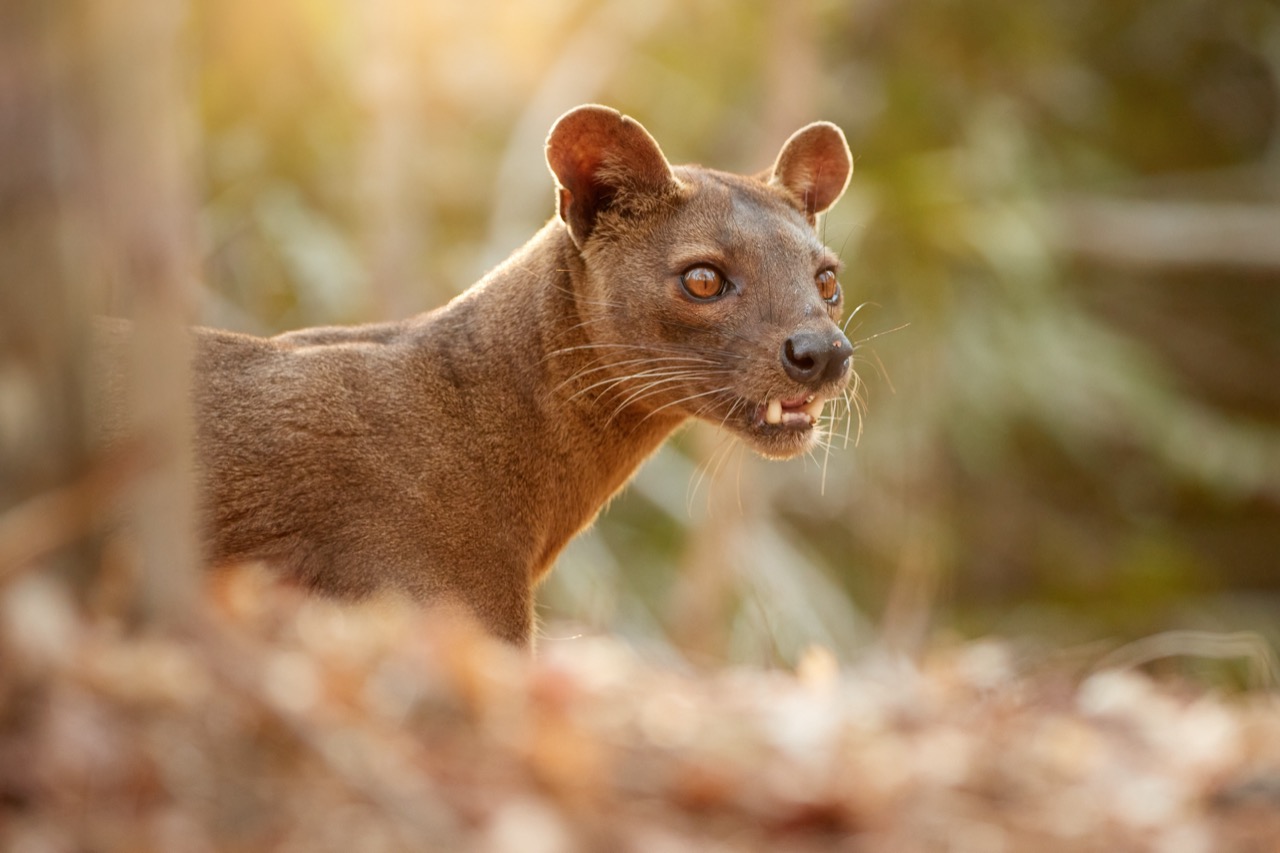The fossa, a unique and intriguing creature, reigns as Madagascar’s top predator. This carnivorous mammal, resembling a cross between a cat and a mongoose, has captivated the attention of biologists and wildlife enthusiasts alike due to its elusive nature and remarkable adaptations. The fossa is not only a vital component of Madagascar’s biodiversity but also a symbol of the island’s complex ecological web.
Characteristics / Physical Description
The fossa (Cryptoprocta ferox) exhibits a slender body with muscular limbs and a long tail that aids in balance, making it an agile climber and hunter. Typically measuring about 70 to 80 cm in length, with a tail almost as long as its body, the fossa weighs between 5.5 and 8.6 kg. Its coat is generally a reddish-brown color, which provides camouflage within the forest habitats. The fossa’s face features large, forward-facing eyes and rounded ears, characteristics that enhance its predatory capabilities by improving its vision and hearing.
Taxonomy and Classification
Classified within the family Eupleridae, the fossa is closely related to Malagasy civets and mongooses. This family is part of a clade that includes cats, hyenas, and mustelids (such as weasels and otters). The fossa’s taxonomy highlights the diverse evolutionary history of carnivorous mammals on Madagascar, having evolved in relative isolation.
Behavior and Social Structure
Fossas are generally solitary animals, coming together only to mate. They are territorial, with males occupying large ranges that overlap with those of several females. Communication among fossas involves vocalizations, scent marking, and visual cues. Notably, they are one of the few mammalian species where females have a pseudo-penis, which is thought to play a role in complex social interactions and mating behaviors.
Habitat and Distribution
The fossa is endemic to the forests of Madagascar, ranging from the northernmost tip down to the south. It prefers dense, remote rainforests but can also be found in the drier deciduous forests and occasionally in more disturbed areas close to human activity. The fossa’s habitat preference underscores the importance of Madagascar’s forest conservation, as deforestation poses a significant threat to its survival.
Diet and Feeding Habits
As an apex predator, the fossa plays a crucial role in maintaining the balance of Madagascar’s ecosystems. It primarily preys on lemurs and other small to medium-sized mammals, along with birds, reptiles, and insects. Its diet flexibility is essential for survival in the fluctuating environments of Madagascar.
Breeding and Reproduction
The breeding season of the fossa occurs around September to October. Mating can be a fierce affair, with males competing for access to receptive females. Females give birth to a litter of two to four young after a gestation period of about three months. The young are cared for in hidden dens, often located high in tree hollows or rock crevices, and are dependent on their mother for nearly a year.
Relationship with Humans
Human interactions with fossas are limited, as these animals are shy and elusive. However, they are sometimes viewed as pests by villagers due to their predation on livestock, particularly poultry. Conservation efforts are crucial to foster coexistence and ensure the survival of fossas, given their role as key predators in Madagascar.
Evolutionary History
The fossa’s evolutionary history is deeply intertwined with the geological history of Madagascar, which separated from mainland Africa about 88 million years ago. This isolation led to the development of a highly specialized and diverse range of flora and fauna, with the fossa evolving to fill the ecological niche of a top predator in the absence of other large carnivorous mammals.
Use as Research Animals
Currently, there is limited use of fossas in research settings, primarily due to their conservation status and specialized habitat requirements. Studies that do involve fossas focus on their ecological roles and behaviors in the wild, contributing valuable information for conservation strategies.

